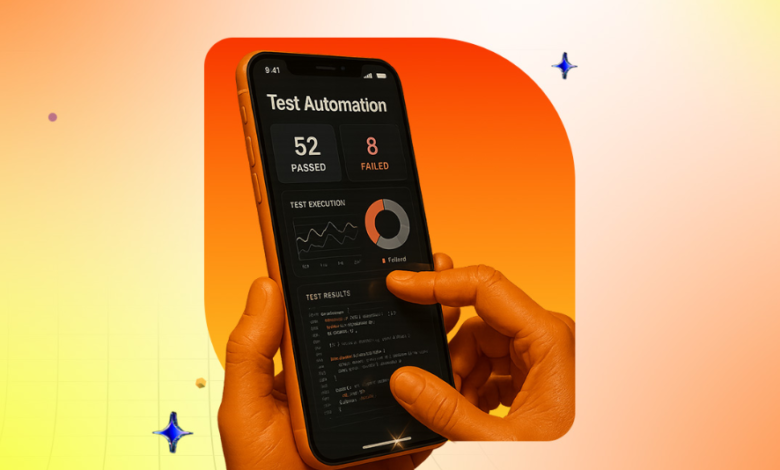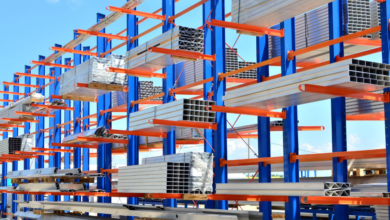AI Test Maintenance: Automatically Updating Tests When UI Changes

The advancement of AI test automation has transformed the testing landscape by introducing adaptive, self-healing mechanisms that counteract the fragility of traditional script-based frameworks. Modern digital environments undergo continuous interface modifications, incremental updates, and design overhauls. Each of these iterations can disrupt conventional test scripts, leading to broken locators, redundant validations, and maintenance delays.
AI-driven test maintenance systems address these challenges by introducing context-aware intelligence that can automatically identify, adapt, and update tests when User Interface (UI) structures evolve. This transition marks a paradigm shift from static test design to dynamically sustained validation frameworks.
The Shift Toward Intelligent Test Maintenance
In conventional automation ecosystems, UI changes often render test suites obsolete due to hardcoded element locators and strict DOM dependencies. Test engineers must manually identify broken objects, reassign identifiers, and verify coverage post-modification. These manual processes take up execution time and introduce human-induced inconsistencies.
AI-based maintenance frameworks reengineer this model by incorporating semantic and visual learning techniques. By analyzing UI attributes such as hierarchy patterns, element positions, and contextual text, AI systems can infer component identities even when underlying locators change. Machine learning models continuously monitor UI behavior, creating adaptive object repositories that evolve with interface versions.
This adaptive mapping ensures that automation pipelines sustain functional stability across deployments. It eliminates redundant script correction cycles and preserves regression integrity through intelligent self-diagnosis.
See also: How Mindfulness and Relaxation Techniques Aid in Pain Relief
Mechanisms Behind AI-Based Test Adaptation
AI-enabled frameworks integrate several algorithmic layers to ensure automated test stability when UI elements shift:
- Object Heuristics and Contextual Inference: Heuristic models analyze UI patterns and establish relationships among interface components. When an element ID or XPath is altered, the AI correlates visual context, neighboring labels, and historical element behavior to determine equivalence.
- Visual Recognition Models: Computer vision algorithms identify components through visual semantics rather than static identifiers. By processing screenshots and pixel data, the model maps visual states to their intended functions, enabling tests to adapt to new layouts without manual updates.
- Change Impact Analysis: AI-based tools monitor commits and release pipelines to detect variations in UI design. The system evaluates change impact by comparing new and previous UI snapshots, isolating affected test paths, and triggering remapping routines.
- Predictive Learning for Element Stability: Historical execution data helps AI determine which UI components exhibit higher volatility. Predictive analytics preemptively adjust dependencies or flag probable failures before execution.
Role of Natural Language Models in Test Maintenance
Language models enable test scripts to transition from rigid syntax toward adaptive, human-readable instructions. When integrated into pipelines, Natural Language Processing (NLP) can interpret test case intentions and reformulate scripts based on updated UI states.
For instance, when a UI label changes from “Submit” to “Confirm,” a traditional test might fail. However, an NLP-integrated AI model interprets semantic equivalence, mapping both commands to a unified action context. This reasoning ensures script resilience against UI modifications.
Natural Language Generation (NLG) also helps documentation by automatically recording metadata about which UI components changed, how they were adapted, and the effects on regression. Such automation eliminates manual change tracking and aligns CI pipelines with transparent auditability.
Integration with Continuous Testing Workflows
Contemporary CI/CD pipelines require continuous validation procedures. Conventional maintenance schedules interrupt integration schedules. AI-powered maintenance integrates effortlessly into DevOps toolchains via autonomous monitoring and self-repairing systems.
Upon detecting a UI change, the AI subsystem pinpoints the modified components, reconfigures locators using contextual insights, carries out localized regression to ensure behavioral uniformity, and records modification events with verifiable documentation. These proactive activities reduce the need for manual input. The test suite stays aligned with changing builds, facilitating continuous deployment (CD) without regression burden.
To scale these intelligent maintenance operations, test orchestration environments need infrastructure that supports parallel execution and high-resolution visual validation.
KaneAI is a Generative AI testing tool that allows teams to create, execute, and manage test cases through simple language prompts. It automatically translates test ideas into executable scripts and runs them in scalable cloud environments.
The tool continuously adapts to app changes, reducing manual effort and maintenance. Designed for modern QA workflows, KaneAI brings the speed and intelligence of generative AI to everyday test automation.
Key Features:
- End-to-end automation for web, mobile, and APIs
- Test creation through natural-language commands
- Large-scale cloud execution with real devices
- Auto-generated scripts compatible with major frameworks
- Seamless integration into DevOps workflows
Object Recognition and Adaptive Locators
A significant obstacle in UI testing is ensuring locator precision when Document Object Model (DOM) attributes change. AI technologies solve this by using smart locational mapping. AI models use dynamic weights for attributes like CSS hierarchy, inner text, ARIA roles, and relative positioning instead of depending on fixed selectors.
While executing, if there is an element mismatch, the system reassesses attributes to predict the most likely match. Reinforcement learning consistently improves this method through past corrective results. Consequently, AI-augmented systems accomplish self-sufficient locator restoration, reducing the spread of failures.
This capability becomes especially valuable during agile-based iterations, where each release modifies component trees. AI systems sustain test consistency without human adjustment.
Maintaining Visual Consistency through AI
Visual differences between interface versions can disrupt automation even when logic remains intact. AI visual validation models compare baseline images and target renderings using pixel clustering and the Structural Similarity Index measure (SSIM).
By differentiating functional UI variations from aesthetic ones, AI test maintenance ensures that tests fail only on meaningful deviations. For instance, color or margin adjustments are categorized as non-breaking, whereas misplaced elements trigger adaptive correction routines.
These systems also sync visual checkpoints with version control metadata, which makes it possible to automatically roll back or revalidate when two UI versions are found to be in conflict.
Handling Dynamic UI and Responsive Design
Modern web and mobile interfaces employ dynamic loading, modular components, and adaptive layouts that complicate automated recognition. Responsive frameworks alter component arrangements depending on device orientation or resolution thresholds. AI test maintenance systems handle this variability through multi-resolution learning and layout abstraction.
Neural models trained on diverse screen geometries can distinguish functional equivalence even when UI positions differ across platforms. Similar learning mechanisms extend to AI mobile app testing, where gesture-driven interactions, viewport-specific rendering, and platform-dependent behaviors require adaptable validation. These models abstract layout variance through clustering, enabling coherent interpretation of UI intent across both web and mobile architectures.
Data-Driven Insights for Test Optimization
Continuous data from execution histories enables AI frameworks to refine test strategies. Machine learning evaluates pass or fail patterns, element stability indexes, and redundancy metrics. Using this insight, AI systems can refactor test suites by:
- Merging redundant cases.
- Removing outdated validations.
- Prioritizing high-risk execution paths.
This optimization reduces overhead and aligns resource use with actual defect probabilities. Reinforcement feedback loops enhance prediction accuracy over time, transforming maintenance into continuous learning rather than periodic correction.
Version Control Integration and Autonomous Validation
AI test maintenance tools interface directly with version control repositories to synchronize updates with testing pipelines. By analyzing commit metadata, the system identifies which files impact the UI layer. Automated triggers update tests when visual or structural modifications are detected.
Integration with CI pipelines ensures that every merge initiates validation cycles augmented by AI self-repairing routines. Each iteration verifies UI consistency and enhances the learning dataset, improving predictive accuracy for future modifications.
The Role of Predictive Analytics in Future Maintenance
Predictive models extend beyond reactive adaptation toward anticipatory maintenance. By recognizing design evolution patterns, AI systems forecast which UI components are likely to change in upcoming sprints.
These insights enable preemptive locator reinforcement, where alternate locators are generated before deployment. This predictive paradigm reduces downtime between UI modification and test readiness.
Enhancing Reliability in Distributed Testing Environments
AI-driven maintenance models align with distributed test infrastructures. Parallel execution across multiple nodes increases the probability of encountering environment-specific UI discrepancies. AI frameworks consolidate these variations using centralized learning, applying correction patterns identified in one environment across all others.
This collective intelligence accelerates healing processes and standardizes UI mapping across test grids. When paired with infrastructure-as-code, the system sets up environments that mirror production variability while keeping test logic consistent.
Security Validation in Automated Maintenance
In addition to UI stability, AI models also assess the security impacts of automated changes. When identifiers or locators change, malicious elements can mimic legitimate components. AI-based verification employs anomaly detection to identify unusual visual or behavioral patterns.
These frameworks use adversarial training to distinguish real updates from alterations. Such training adds an additional protective layer in automated maintenance pipelines, enhancing functionality and integrity verification.
Challenges and Future Advancements
Although researchers have achieved notable advancements, AI test maintenance still faces challenges in interpretability, computational efficiency, and false-positive detection. Excessive dependence on heuristic inference can sometimes lead to incorrect mappings, particularly when visually alike elements are present.
To address these challenges, current research highlights hybrid modeling that integrates symbolic reasoning with deep neural inference. This integration improves clarity and diminishes overfitting in location predictions.
Future frameworks may also adopt federated learning, allowing distributed models to train on diverse datasets without central data sharing. Such architectures would accelerate adaptation across heterogeneous environments while preserving data security.
Conclusion
The progression of AI test automation toward intelligent, self-perpetuating maintenance frameworks represents a paradigm shift in automated validation. Incorporating visual recognition, Natural Language Understanding (NLU), and predictive learning, these frameworks ensure sustainability of automation activity even after changes to the UI designs.
As applications become more modular and dynamic, AI-based maintenance proactively aligns validation with architecture evolution. Ongoing learning and adaptive correlation allow automation to shift from reactive script fixes to intelligent, proactive predictive stability. In today’s development landscape, this convergence of intelligence and automation establishes the basis for enduring, scalable quality assurance.





